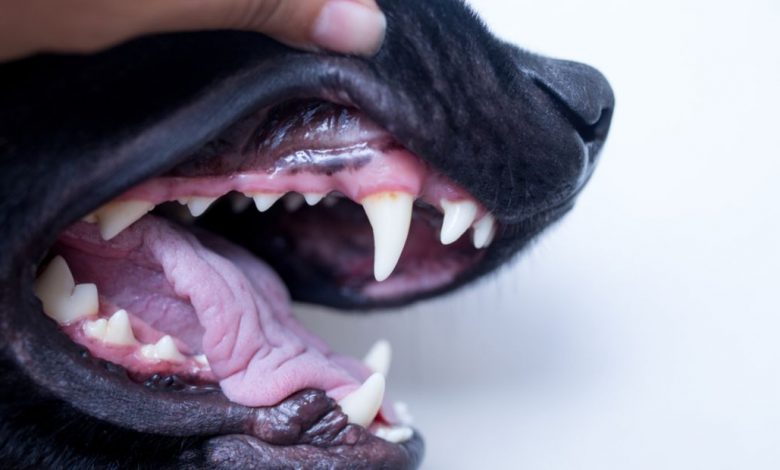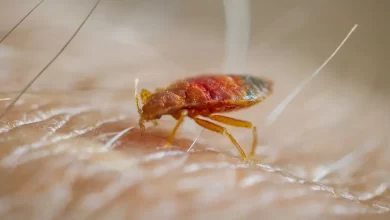My Dog Has Black Gums

The importance of oral health and dental hygiene for pets cannot be understated. Many oral diseases can progress over time and lead to other, more serious problems if left untreated. As pet owners, it’s crucial that we remain vigilant and perform regular physical exams to detect any potential issues early on. If we notice anything out of the ordinary, it’s important to seek professional veterinary advice as soon as possible. Only a qualified vet will be able to properly diagnose the problem. In some cases, you may be referred to a dentist with specialized veterinary training.
Taking care of our pets’ teeth is one of the most important things we can do to ensure their overall health and wellbeing. By remaining alert and starting treatment early, we can help them avoid a lot of pain and suffering down the road.
Table of Contents
Are my dog’s gums naturally black?
If we observe our dog has black gums, the first thing we need to do is determine whether they are turning black. Some dogs have natural black pigment in the mucus membranes which make up their gums. The reason for this is genetic, the same reason why dogs have various colors of coat. It does not necessarily mean there is a problem.
Few dog breeds have entirely black mouths, tongues, or gums, but some dogs are more likely to have black spots than others. The coloration can also look purple or blue instead of black. Some dog breeds that may have entirely black gums or black spots in their mouth include:
- -Chow Chow
- -Shar Pei
- -Dalmatian
- -Australian Shepherd
- -Irish Setter
- -Pit Bull breeds
- -Mastiff breeds
- -Newfoundland
Our dog’s gums can tell us a lot about their overall health. If their gums are unnaturally black, it could be a sign of various health issues. However, if the dog’s gums are too pale, very red or any other color than their normal color, it could be a sign of trouble. For example, bluish gums could signify cyanosis, a condition where insufficient oxygen is getting to the mucus membranes. Yellowish gums could be an indication of jaundice.
We need to know if the black coloration in our dog’s mouth is natural or if the black spots are appearing unnaturally. To determine this, we can look for concurrent symptoms. If your dog has black gums and bad breath (other than natural dog breath), it may be a sign of a medical problem. Loss of teeth, bleeding, inflammation and other signs might also help us to determine a cause.
Why are my dog’s gums turning black?
As stated above, some dog breeds have naturally occurring black pigment in their gums, tongue or mouth. Whether you adopted your dog as a puppy or an adult, at some point you will likely notice the coloration of their mouth. It could be when feeding them a treat, when playing with a toy or simply seeing them yawn on the sofa. It is during these times you might first notice the dog’s gums are turning black or black spots suddenly appear.
What does it mean if my dog has black gums?
Although you’ll need to take your dog to the vet for proper diagnostic tests, it’s good to know what you might expect. While it may seem obvious, it’s important to check if the gums have actually turned black. It’s possible the dog has eaten something that has temporarily stained their gums a different color, like if they’ve been chewing on a pen and the ink has gotten on their gums.
There are not many diseases which will cause a dog’s gums to turn black, but the most common include:
Periodontal disease: Also known as gum disease, if the animal is not provided with proper and consistent oral care, they can suffer from periodontal disease. Over time, the gums can darken, especially when they are not well irrigated. Gum disease can also result in other types of discoloration or symptoms such as bad breath or bleeding.
Gingivitis: While gingivitis is a type of periodontal disease, usually in the early stages, we can mention it on its own also. It can present as a black line around the gum and is caused by plaque and tartar buildup. Gingivitis is treatable with proper dental hygiene at home and professional cleanings.
Acanthosis nigricans: Acanthosis is a skin condition that is characterized by dark, discolored patches on the skin. It is a relatively common condition in humans, but much less so in dogs. In dogs, the gums may also be affected and may appear darker than usual.
Periodontal tumors: Any abnormal growth in the area around the teeth and gums can cause decreased circulation and oxygenation, which can lead to darkening of the gums. Tumors can be benign or malignant, but only a veterinarian can determine the underlying cause.
Melanoma: Melanoma is a type of cancer that can affect the skin, gums, or any other area with pigment-producing cells. In dogs, melanoma is most commonly found on the gums or around the eyes. Early detection is critical for successful treatment of this disease.
We need to keep an eye on our dog’s gums, as a change in color can be a long-term consequence of any number of conditions. While it’s relatively rare for a dog’s gums to turn black, it’s possible that it could happen gradually over time. That’s why it’s important to brush your dog’s teeth regularly – not only will this help keep their oral health in check, but it will also give you a chance to examine their gums for any unusual changes in color.
What to do if my dog has black gums
It’s possible that the black discoloration of your dog’s gums is due to an underlying pathology, so it’s vital to take them to a veterinarian for diagnosis. Trying to medicate the dog ourselves is dangerous and could seriously threaten their health. There are many human medications which are toxic or otherwise unsuitable for dogs, so self-administering treatment for black gums in dogs is not an option.

